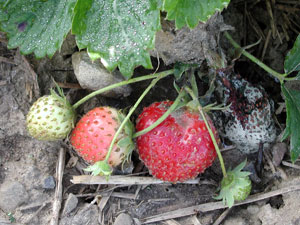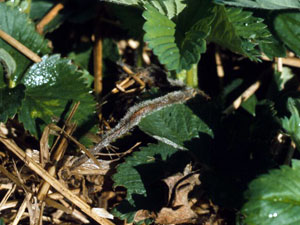Botrytis cinerea
Botrytis cinerea is the most common fungus affecting strawberry fruit. Botrytis fruit rot (Gray mold) occurs when weather is wet during flowering. Gray mold usually begins at the blossom end or where a berry is touching another infected berry. The infected portion is firm and brown while the berry is still green…
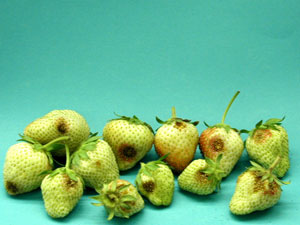
but expands as the fruit ripens.
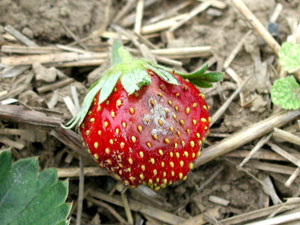
Powdery gray spores are produced as the fruit ripens, infecting other fruit…

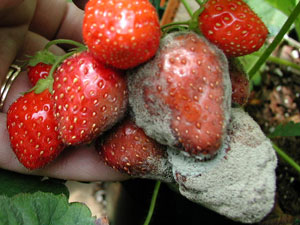
and plant debris.
